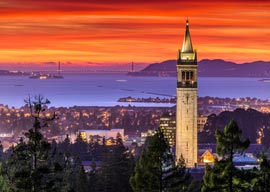
May 27, 2015

San Francisco Bay
Source: Shutterstock
Costliness has numerous advantages. For example, liberal San Francisco has shoved out over half of its crime-prone black population since 1970, all without getting into tiresome discussions of why blacks don”t happen to live there anymore.
I”ll come back to the interaction of race and cost in another column. Today, though, I want to discuss how conservatives have routinely shot themselves in the foot over the years by assuming that the capitalist system could never afford proposed environmental reforms.
It turns out, however, that capitalism is pretty good at making things affordable enough.
The current oil spill from a land pipeline near Santa Barbara is a reminder that the environmental protection business exploded into existence in January 1969 in the millionaire’s playground of Santa Barbara when an offshore oil well sprung a leak.
A few weeks before, on Christmas Eve December 1968, the Apollo 8 astronauts in orbit around the moon had taken the famous Earthrise photo of the beautiful blue disk above the lifeless moon. This view of the Earth as small and potentially fragile set the stage for 1969 to be the first year of environmentalist excitement since the Depression had elevated things that are good-for-the-economy as the highest value.
It’s worth stopping to realize that mid-Century Americans didn”t find anything particularly left or right about conservation, which, as the name suggests, could easily be seen as conservative. Conversely, Communist folk singer Woody Guthrie was ecstatic in 1941 about the building of the Grand Coulee dam across the Columbia River to power aluminum factories to build bombers.
My native San Fernando Valley, for example, was largely built up out of bean fields from the 1930s through the 1970s, following the reigning consensus of the time that prioritized fast, cheap construction as being good for the workingman. Today, with hindsight, it’s easy to regret the failure to invest more upon amenities such as wider roads, better sidewalks, and more parks. After all, South California suburbs developed before 1929, such as San Marino, and after 1969, such as Irvine, were put up in a less quick and dirty fashion.
Most notoriously, after the flood of 1938, the Army Corps of Engineers rushed to turn the Los Angeles River in the Valley into a giant concrete ditch, finishing it in 1942 to prevent another flood from wiping out much of America’s military-industrial complex. If we knew then what we know now (for instance, how expensive Valley land would turn out to be), we might have treated the Los Angeles River as in later decades Palm Springs, CA and Scottsdale, AZ did their flash flood zones, building golf courses and baseball diamonds where the turf can absorb the raging waters.
But money and time was tight in 1938-1942, so we got a big concrete culvert. And that was good for the economy, which might otherwise have been washed out to sea.
From the stock market crash in 1929 to the rise of environmentalism in 1969, almost any development could be justified as being good for the economy. But the economy in Santa Barbara in 1969 was plenty good already. Why would this idyllic home of the rich and carefree need more oil wells?
Indeed, without the emergence of environmentalism, the gorgeous and empty Gaviota Coast beyond Santa Barbara was sure to be developed into a new San Fernando Valley, providing pleasant, low cost living for hundreds of thousands of people. But, how would crowding the roads benefit those who had already got theirs in Santa Barbara?
Industry protested the loss of jobs from environmental regulation, asking how could Santa Barbara’s economy survive without massive oil drilling?
As it turned out, however, Santa Barbara did okay.
And that has proved a general pattern: the rich do pretty well under liberalism because capitalism has turned out to be far better than Woody Guthrie imagined at making what originally seems to be ruinously expensive affordable … at least for some.